In "Partner Perspectives" we get to know the diverse people, roles, and views of wildfire management in the Pacific. Creighton Litton kindly spent some time with us discussing his experiences as a wildfire scientist.
Name: Creighton Litton
Role: Professor, Dept. of Natural Resources & Environmental Management
Organization: University of Hawaii at Manoa
Pacific Fire Exchange (PFX): What sparked your interest in wildfire?
Creighton (CL): Back in 1990, I was a senior undergraduate student in Emory and Henry College in rural southwestern Virginia. My academic advisor got me interested in a research project with another student. We did a study on the recovery of native and non-native vegetation in the Appalachian Mountains following a wildfire. Specifically, we looked at differences in post-fire recovery of those environments based on aspect (slope direction). That really set my interest in wildfire science.
PFX: Describe your work as a wildfire scientist.
CL: Over time my research in wildfire science has evolved from asking questions about community ecology (e.g., What are the responses of individual species and the community as a whole to fire, both as a natural and anthropogenic disturbance?) to understanding the ecosystem-level impacts of wildfire both as a natural and anthropogenic disturbance.
After undergrad, I did my M.S. thesis research at North Carolina State University in the long-leaf pine ecosystems - probably one of the most naturally fire-prone ecosystems in the country. Around that time there was increasing recognition that taking fire out of those systems had led to undesirable changes in vegetation. My project focused on what happens when you reinstate fire as a natural and frequent disturbance in these systems.
From there I went to South America as a Peace Corp volunteer and served as a professor in a forestry school at Universidad Catolica del Maule. In Chile they have quite extensive non-native pine plantations. They use fire as a site prep tool and those fires would often burn into the adjacent native forest. My research there examined the impacts of fire on those native ecosystems and how they recovered from fire.
I conducted my PhD research in Yellowstone National Park and that’s when I started to ask questions not only about the immediate impacts of fire, but also how fire as a natural disturbance influences the structure and functions of ecosystems over time. The ecosystems in Yellowstone are very fire adapted. At the time we had a very poor understanding of how, in the years to decades following fire, these stands reassembled and how their ecosystem functions - like carbon cycling – change. That set me up for the research that I came to Hawaii to do.
As a post-doctoral researcher at the US Forest Service, Institute of Pacific Islands Forestry, I looked at the biogeochemical impact of non-native grass invasion into native Hawaiian dry forest. Fifteen years ago, there was a good scientific understanding of the impacts of invasive species on plant communities, but we had a relatively poor understanding of what role invasive species have for the structure and function of these ecosystems. One of the main research takeaways from this Hawaii research was that grass invasions into dry forest systems not only result in a decline in native biodiversity but they also change ecosystem functions like the cycling of water, carbon and nutrients.
I’ve now been at UH Manoa for 11 years in the Department of Natural Resources and Environmental Management (NREM) as a faculty member split between teaching and research, with a continued focus on wildfires. In addition, for the last year and a half I’ve taken on an additional administrative role as the director of the Undergraduate Research Office on the UH Manoa campus.
“We’ve made great progress, but it doesn’t mean all the work is done. I would like to continue to collaborate with other scientists, land managers, and policy makers to refine where the knowledge gaps are and address them together.”
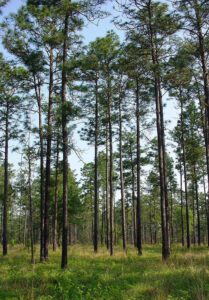
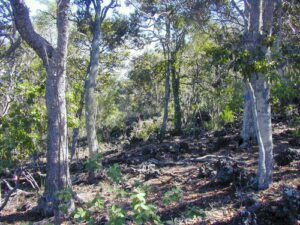
PFX: Share an experience you've had in partnering with others.
CL: One of the best examples for wildfire, in my mind, has been the partnership between the University of Hawaii at Manoa, the USFS Institute of Pacific Islands Forestry, in particular Susan Cordell and Christian Giardina, and the Hawaii Wildfire Management Organization. We collaborated a number of years ago to get funding for the Pacific Fire Exchange (PFX). We all understood and recognized that wildfire science and management was underappreciated and under-studied in the state of Hawaii. I think that the collaboration has been very useful in helping to inform the general public, policy makers, land managers, and scientists of the wildfire issue in Hawaii and what our needs are moving forward.
We’ve made great progress, but it doesn’t mean all the work is done. I would like to continue to collaborate with other scientists, land managers, and policy makers to refine where the knowledge gaps are and address them together.
“We have a lot of work in front of us to modify (current fuel models) or develop something new that will be useful for predicting fire behavior in Hawaii.”
PFX: What unanswered questions do you have about wildfire?
CL: We need to better understand the non-native grass-fire cycle, the role of non-native species in Hawaii’s fire regime, and what can be done to mitigate their effects. We also need a better understanding of how these species change fuel loads and micro-climate. Vegetation can impact micro-climate, which impacts whether fires ignite and how they burn.
I’m also very interested in being able to better predict fire behavior. All the fire models available for fire managers and scientists have been developed on the mainland. We have a lot of work in front of us to modify them or develop something new that will be useful for predicting fire behavior in Hawaii. There’s a lot of promise for the next generation of fire models that aren’t developed for specific vegetation types, so they’d be more transferable to a place like Hawaii.
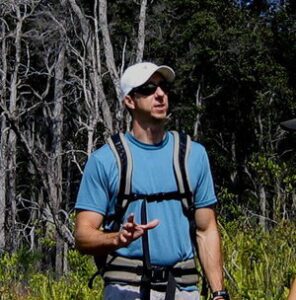
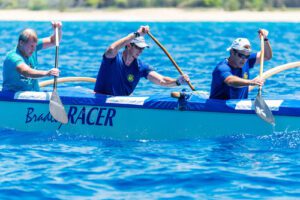
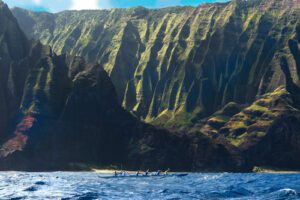
PFX: Favorite way to spend your free time?
CL: I enjoy very much spending time at home with my wife and our dogs, working in our yard and garden. We grow a lot of our own fruits and vegetables, and also have lots of native plants in our yard that I enjoy tending.
Outside of that, my number one passion is outrigger canoe paddling. I’ve been paddling for 15 years and I’m currently a member of Kailua Canoe Club. When I first moved to Hawaii in 2002, I wanted to embrace being surrounded by vast expanses of the Pacific Ocean and do something to connect with the ocean, since I had always been a mountain person. For me, being on the water is about a couple things. I like the exercise and competitive aspect of canoe paddling, and I also love being on the water and the unique perspective it provides. You’re on land all day long but every now and then you get out on the ocean and you’re looking back at the land - that’s been a really powerful experience for me.
PFX: Share something most people don’t know about you.
CL: I lived in Chile in South America for five years and I’m fluent in Spanish. Within about 6 months of being in Chile, I was teaching classes in Spanish. It was a necessary and very steep learning curve! I still have a lot of friends, people that I would call family, that are in Chile. I’m still very passionate about those relationships, the culture, and that part of my life, and try to stay engaged with it all from afar.
